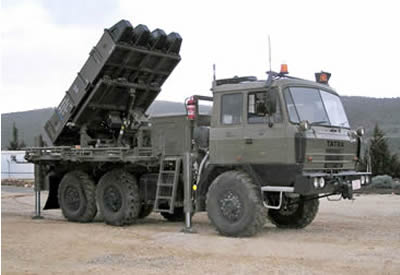At the lower tier, the market is preparing new air defense systems for simultaneous missile and rocket defense. Due to its unique geopolitical situation, Israel is the only country constantly subjected to cross-border rocket attacks. However, with the proliferation of global terrorism, demand for such systems is expected to grow in the coming years.
Several Israeli companies are collaborating in the development of such systems, including IAI subsidiaries Elta and RAFAEL. This consortium has already introduced the Barak I missile defense system, and is currently developing the Barak II and Spyder systems. Although unconfirmed by Israel’s official sources, it was reported that Barak II has entered a $330 million development program funded jointly by the Indian and Israeli defense ministries. The Spyder was jointly funded by RAFAEL and IAI and is currently evaluated by several air forces. “The RAFAEL Spyder concept reflects the multi-mission aspect of modern air and missile defense systems” a senior IAF official told Defense Update. “The Israel Air Force plans to evaluate the system.”
Yossi Horowitz, marketing manager for air defense systems at RAFAEL confirms the growing interest in the new systems: “At Defexpo 2006 exhibition in India RAFAEL unveiled the new Spyder MR, a growth version of the Spyder SR system currently in development. The MR system will employ the Derby and Python 5 missiles fitted with boosters to enable vertical launching, to gain the initial speed and altitude. Both interceptors will engage targets at ranges beyond 35 kilometers and up to an altitude of 16,000 meters.
 Counter Rocket, Artillery and Missile (C-RAM) defenses based on directed energy weapons are also evolving and could be expected to mature within the next few years. Chemical lasers are already providing such capabilities, while safer solid state lasers, which are still in development, promise to have even more potential. C-RAM systems will become a reality in the future, offering multi-mission, low-cost per kill, simple to operate tactical air defense system. While not replacing current missile defenses, they will represent an evolutionary phase enabling air defenses to handle new threats, expected to be smaller and stealthier – based on high precision weapons, long and short range cruise missiles and armed and unarmed UAVs. The challenge faced by air defense systems developers is to establish a mix of multi-mission systems operating in different and rapidly changing scenarios.
Counter Rocket, Artillery and Missile (C-RAM) defenses based on directed energy weapons are also evolving and could be expected to mature within the next few years. Chemical lasers are already providing such capabilities, while safer solid state lasers, which are still in development, promise to have even more potential. C-RAM systems will become a reality in the future, offering multi-mission, low-cost per kill, simple to operate tactical air defense system. While not replacing current missile defenses, they will represent an evolutionary phase enabling air defenses to handle new threats, expected to be smaller and stealthier – based on high precision weapons, long and short range cruise missiles and armed and unarmed UAVs. The challenge faced by air defense systems developers is to establish a mix of multi-mission systems operating in different and rapidly changing scenarios.
The IDF constantly monitors potential launch areas in the Gaza strip, detecting improvised rocket launches, calculating their ballistic trajectory and plotting the expected target, thus issuing a “Red Dawn” warning for the population to take cover. These early warning systems could be employed with active protection elements, such as low-cost ‘hit to kill’ interceptor missiles, C-RAM laser such as the Northrop Grumman Skyguard or air defense artillery, firing special ammunition, which could defeat the rockets in flight. Reportedly, Israel evaluated the Rheinmetall Air-Bursting munitions (ABM) ammunition as a potential countermeasure against improvised rocket attacks from Gaza but ABM was found immature for operational use for the C-RAM role. Therefore, at present, C-RAM countermeasures remain an “unsolved issue”.
Additional parts of this article:
- Missile Defense System’s Update
- Rockets – Strategic or Tactical Threat?
- Arrow’s Spiral Evolution
- Investing in Missile Defense





















